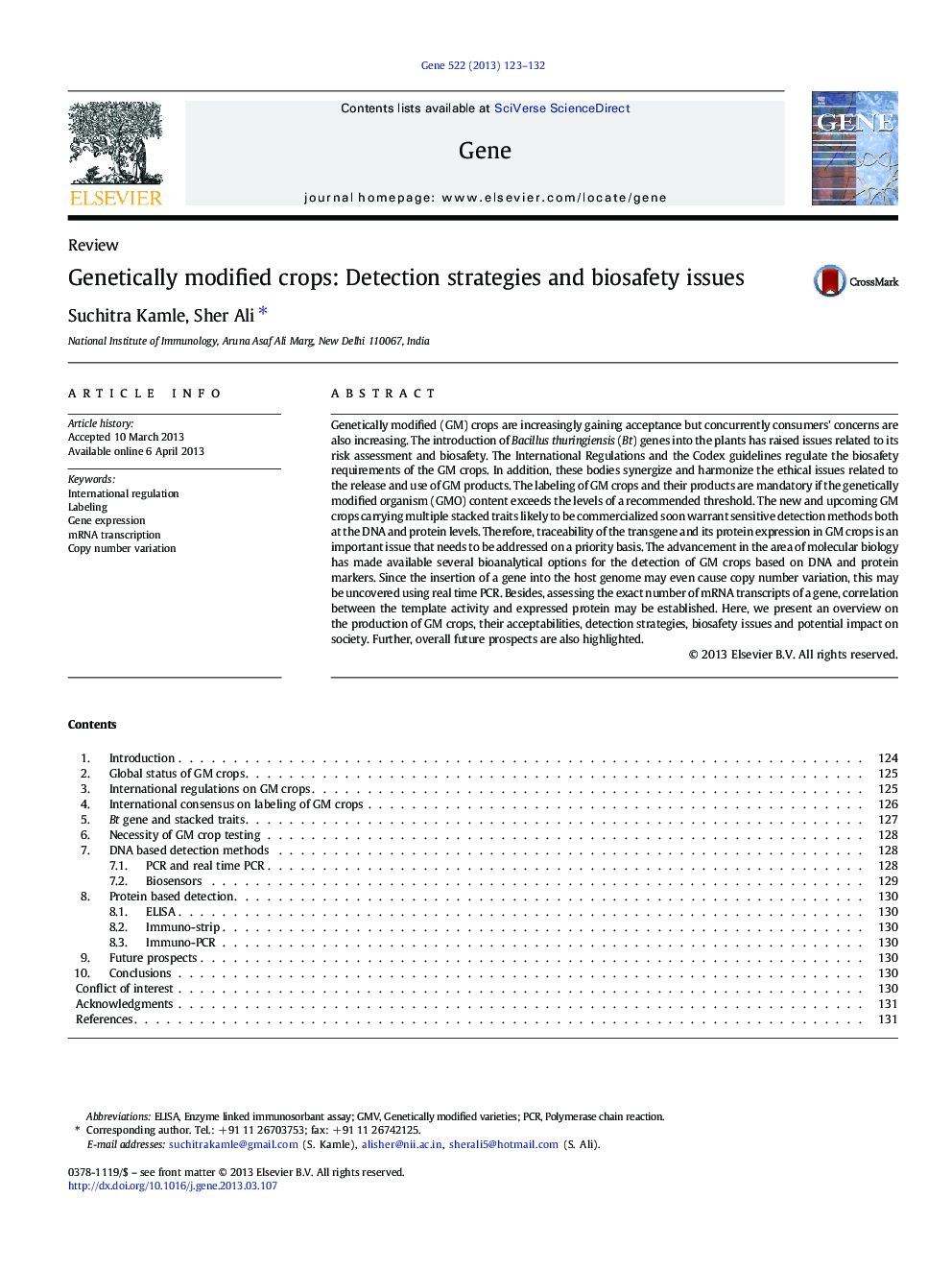| کد مقاله | کد نشریه | سال انتشار | مقاله انگلیسی | نسخه تمام متن |
|---|---|---|---|---|
| 2817209 | 1159975 | 2013 | 10 صفحه PDF | دانلود رایگان |

• Current status of genetically modified (GM) crops.
• Implementation of biosafety measurement and labeling issues.
• Detection methods for GM crops (DNA/protein levels).
Genetically modified (GM) crops are increasingly gaining acceptance but concurrently consumers' concerns are also increasing. The introduction of Bacillus thuringiensis (Bt) genes into the plants has raised issues related to its risk assessment and biosafety. The International Regulations and the Codex guidelines regulate the biosafety requirements of the GM crops. In addition, these bodies synergize and harmonize the ethical issues related to the release and use of GM products. The labeling of GM crops and their products are mandatory if the genetically modified organism (GMO) content exceeds the levels of a recommended threshold. The new and upcoming GM crops carrying multiple stacked traits likely to be commercialized soon warrant sensitive detection methods both at the DNA and protein levels. Therefore, traceability of the transgene and its protein expression in GM crops is an important issue that needs to be addressed on a priority basis. The advancement in the area of molecular biology has made available several bioanalytical options for the detection of GM crops based on DNA and protein markers. Since the insertion of a gene into the host genome may even cause copy number variation, this may be uncovered using real time PCR. Besides, assessing the exact number of mRNA transcripts of a gene, correlation between the template activity and expressed protein may be established. Here, we present an overview on the production of GM crops, their acceptabilities, detection strategies, biosafety issues and potential impact on society. Further, overall future prospects are also highlighted.
Journal: Gene - Volume 522, Issue 2, 15 June 2013, Pages 123–132